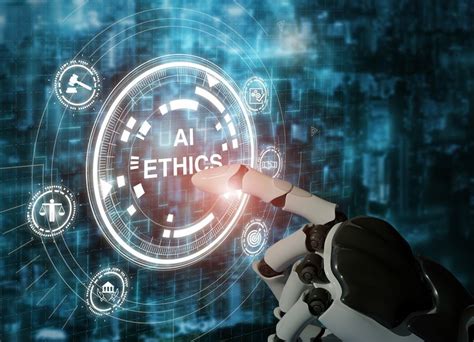A New Era of Pet Companionship
In the not-so-distant future, AI robot pets are poised to revolutionize the way we interact with our furry friends. These advanced machines will offer a unique blend of companionship, entertainment, and convenience, promising to transform the lives of pet owners everywhere. However, with this technological advancement comes a complex ethical landscape that we must carefully navigate.

Ethical Crossroads: AI Robot Pets vs. Traditional Pets
Companionship and Emotional Support
- AI robot pets can provide constant companionship, eliminating loneliness and offering emotional support in ways traditional pets might not be able to.
- They can be programmed to respond to specific emotions, offer personalized interactions, and simulate the bonds formed with living animals.
Welfare and Autonomy
- Unlike traditional pets, AI robot pets do not have biological needs such as food, water, or shelter, raising questions about their ethical status.
- Should they be considered sentient beings deserving of rights and protections, or are they merely advanced machines?
Environmental Impact and Sustainability
- Traditional pets have a significant environmental footprint, from food consumption to waste production.
- AI robot pets could potentially reduce these impacts and embrace sustainable practices, promoting eco-friendly pet ownership.
Moral Imperatives: Striking a Balance
As we embrace this new era of pet companionship, it is crucial to establish moral guidelines and ethical considerations.
Transparency and Informed Consent
- Pet owners should be fully informed about the capabilities and limitations of AI robot pets before making a purchasing decision.
- They should understand the potential risks and benefits, including the ethical implications of interacting with these machines.
Animal Welfare and Rights
- While AI robot pets cannot replace living animals, they should not be used as substitutes for traditional pet ownership.
- Animal welfare should remain a priority, and pet owners should consider the emotional and physical needs of living creatures.
Technological Responsibility
- Designers and manufacturers of AI robot pets have an ethical obligation to ensure their products are safe, reliable, and do not perpetuate harmful stereotypes or biases.
- They should consider the potential impact of these machines on society and the environment.
Future Directions: A Path Towards Harmonious Coexistence
The future of AI robot pets is filled with both opportunities and challenges. By addressing the ethical considerations outlined above, we can harness the potential of these machines while safeguarding our values and responsibilities as pet owners.
Emerging Applications
- Therapy and Assistance: AI robot pets can provide companionship and emotional support to individuals with mental health conditions, disabilities, or social isolation.
- Education and Research: They can be used as educational tools to teach children about robotics, empathy, and responsible pet ownership.
- Disaster Relief and Crisis Management: AI robot pets can assist in search and rescue operations, provide comfort to victims, and support first responders.
Effective Strategies
- Collaboration and Dialogue: Engage stakeholders, including pet owners, animal welfare organizations, and ethicists, in open and transparent discussions.
- Ethical Guidelines: Develop comprehensive guidelines and standards for the design, production, and use of AI robot pets.
- Education and Awareness: Foster public awareness about the ethical implications of AI robot pets and promote responsible ownership.
Conclusion: A Vision for the Future
As we navigate the uncharted territory of AI robot pets, it is imperative that we approach this technological advancement with both excitement and prudence. By embracing ethical principles and adopting responsible practices, we can ensure that these machines enhance our lives while preserving the welfare of both humans and animals. Together, we can create a harmonious coexistence where AI robot pets complement traditional pet ownership, providing new avenues for companionship, support, and joy.





















